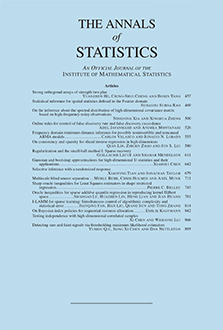Abstract
In observational studies designed to estimate the effects of interventions or exposures, such as cigarette smoking, it is desirable to try to control background differences between the treated group (e.g., current smokers) and the control group (e.g., never smokers) on covariates X (e.g., age, education). Matched sampling attempts to effect this control by selecting subsets of the treated and control groups with similar distributions of such covariates. This paper examines the consequences of matching using affinely invariant methods when the covariate distributions are “discriminant mixtures of proportional ellipsoidally symmetric” (DMPES) distributions, a class herein defined, which generalizes the ellipsoidal symmetry class of Rubin and Thomas [Ann. Statist. 20 (1992) 1079–1093]. The resulting generalized results help indicate why earlier results hold quite well even when the simple assumption of ellipsoidal symmetry is not met [e.g., Biometrics 52 (1996) 249–264]. Extensions to conditionally affinely invariant matching with conditionally DMPES distributions are also discussed.
Citation
Donald B. Rubin. Elizabeth A. Stuart. "Affinely invariant matching methods with discriminant mixtures of proportional ellipsoidally symmetric distributions." Ann. Statist. 34 (4) 1814 - 1826, August 2006. https://doi.org/10.1214/009053606000000407
Information





